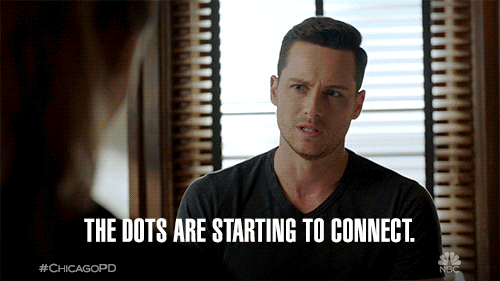Our work requires us to have the knowledge and skill to engage with students, to meet them where they’re at in their educational journeys, and to challenge them to think in bigger, bolder ways.
One way we can challenge students is to practice having dialogue about and across differences. It’s safe to assume that every student at your institution has a myriad of life experiences that they carry with them each day, shaping how they interact with the rest of the campus community.
Having conversations about these differences can encourage students to develop a sense of empathy toward others. It can also lead to conflict, which may frighten your students or make them uneasy. Still, having these conversations is vital to students’ learning experiences and overall critical thinking abilities.
So, here are some tactics that you can implement to facilitate these conversations effectively.
5 Tips
1. Survey your students
One of the easiest ways to know what sorts of topics students want to talk about is to create a short, open-ended survey, allowing them to respond directly to you. This can come through a variety of mediums, including email, social media, and in-person conversations.
Here are some examples of questions to ask:
- What topics do you find yourself thinking about frequently?
- What unpopular opinions do you wish more people would talk about?
- What’s happening on-campus or in the world that you wish you could talk with your peers about?

The goal here is to garner a variety of opinions from potential participants. Only getting folks who think similarly will not lend itself well to the learning outcomes you likely have for the event. Controversial or hot-take topics are often uncomfortable to talk about but they are necessary for students’ growth and learning.
By surveying students, you make them a part of the process, which shows them that you care about their learning experiences and want their voices to be heard. They will also be more likely to ask their friends and classmates to join them for the conversation.
After you’ve gathered responses, get a program planning team together and brainstorm ideas on how you might research the topic, whom you might invite to speak about the issue, and in what creative ways you could engage students in the conversation.
2. Walk the walk before you talk the talk
There are plenty of resources available for researching tough topics. Here are a few of my favorites:
Campus libraries and free databases
Your institution probably subscribes to hundreds, if not thousands, of resources that you can freely peruse. Libraries typically make searching these databases as easy as possible. Knowing keywords on a topic is a great place to start. You can also talk to librarians, who are wizards in helping anyone find materials that’ll help take conversations to the next level.
Other databases to consider exploring include Google Scholar, CORE, and Microsoft Academic.
Your network
Everyone working in your office or in other functional areas of your institution knows something or someone you don’t.
Ask folks what works best for them in leading tough conversations and read up on any professional organizations that your office subscribes to. Your institution might be a member of NASPA, ACPA, ACUHO-I, AERA, ASCA, NACA, and other organizations. Remember to look into regional and state-level groups, too!
If you’re an institutional member, you’ll likely be able to access online resources that the organization offers and search for things that fit your needs. You can familiarize yourself with trends on a topic and network to find out best practices from other institutions.
Faculty
Remember: There may be faculty members on your campus who specialize in the research we’re trying to do. Reach out to them!. See if they are willing to meet with you, perhaps over coffee or a meal.
For example, you might talk to a sociology professor who has spent years researching peace and conflict studies about what trends they have seen when it comes to dialogue about and across differences. You can also ask them about what strategies work best for them when facilitating these conversations.
Understanding a topic and trends within it will boost your confidence in leading conversations. Without this knowledge, you might struggle to challenge participants’ thinking, leading to conversations that aren’t very meaningful.
For example, if you’re looking to lead a discussion about the electoral college, it would help to understand the history of the system, its pros and cons, and the ways in which it impacts young Americans today. This also can set you up for a bigger conversation regarding the impact of voting as it relates to local policies and laws and how those, in turn, impact your students.
Bringing it back to real-world implications is vital for fostering dialogue; with any topic, students should understand how it impacts them and those around them.

3. Design an outline and stick to it
Here is a barebones structure for an hour-long conversation that can loosely be applied to any discussion:
- 5 mins – Introduction, opening up the participants to why they’re there
- 8 mins – Small group discussion about what participants already know (break them up into groups and give them a single guiding question to talk through together)
- 8 mins – Large group discussion on what was shared within the small groups
- 8 mins – Guest speaker #1 (Invite a speaker into the space, such as a faculty member or local community organization leader, who can discuss one or more research-based perspectives on the issue)
- 8 mins – Guest speaker #2 (Invite a second speaker to discuss one or more perspectives that differ from the first speaker’s)
- 8 mins – Small group discussions (Have students return to the same group as earlier and pose a single guiding question to talk through, such as “how might this new information change your previous view about _____?”)
- 8 mins – Large group discussion to summarize and reflect
- 5 mins – Conclusion (Be sure to highlight the next steps participants can take after the event to respond to what they’ve realized or discovered about the topic.)
An outline like this works well because it allows participants to think about what they already know, what they might not know yet, and how they take in new information while in groups, small and large. This challenges participants to work through conflict within a guided space.
4. Be a reflective questioner
To utilize reflective questioning, get students talking about what they know and feel.
Dig a little deeper by asking where their knowledge and emotions originated. This will help them connect dots between what they’ve learned and how they’ve learned it. It also gives them a chance to think about how a long-held belief has guided their life previously and how it might continue to do so in the future.
Here are some reflective questions to consider asking:
- What is your current understanding about _____?
- How is that understanding consistent with the evidence or knowledge on _____?
- What do you think you could do to learn more about ______?
- What’s your plan to learn more about _____?
Another great resource on reflective questioning can be found here.
5. Choose your physical environment wisely
Think about the physical space you’re in and how it might impact learning.
If, for example, you’re in a large auditorium with a dozen people talking about a topic, it will be difficult to get participants centered and focused. On the opposite end, if you try to engage 25 people in a delicate conversation within a space that only comfortably fits 15, your participants will likely be distracted.
Finding a location that is familiar to participants may also positively impact their willingness to share, collaborate, and disagree with others. These big conversations require a level of vulnerability and if the physical space is completely new to people, it might not allow them to open up and speak honestly, ending the discussion before it even begins.
In addition, some spaces reinforce hierarchies and power dynamics. Any opportunity you have to flatten the varying levels of power will help people open up and share their perspectives.
Other elements of the venue to consider include:
- technology capabilities (yes, always use a mic; you never know who will need it)
- visuals (to help get a point across and help folks conceptualize an idea or perspective)
- writing space, if the conversation calls for it
- the temperature of the space (it’s hard to think when the room is uncomfortably hot or cold)
- seating and table arrangements (round tables are most conducive to small group discussions)

Engaging in these big conversations requires that you, as the facilitator, maintain a sense of calm and compassion. Students will likely speak from their own experiences and might not say the most politically correct things. That’s okay! It’s a part of learning for them and for you.
You also have to understand that these conversations might take a large mental and emotional toll on some students… while for others, it will just be another day talking about themselves and their experiences. Balancing the support you show for all folks will be an important role that you’ll assume.
So, ask the questions. Understand that these conversations look different for everyone. Most of all, give people a chance to learn from one another. Whether it’s a small space with five people or a one-on-one setting, you can and will be able to have conversations that matter.
What tips do you have for leading big conversations? We’d love to learn from you. Connect with us on Twitter @themoderncampus and @rfwilliford.





